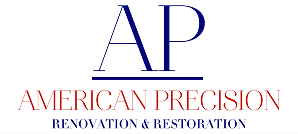Deciding between professional painters and do-it-yourself painting involves weighing multiple factors including cost, time, quality expectations, and personal capabilities. Both approaches have advantages and drawbacks that vary based on project scope, skill level, and individual circumstances. Making the right choice ensures satisfaction with results while staying within budget and timeline constraints.
Cost Analysis & Budget Considerations
Professional painters charge for labor, materials, insurance, and business overhead, while DIY projects require only material costs and tool purchases. However, simple cost comparison doesn’t tell the complete story. Factor in time value, potential mistakes, and long-term results when evaluating total project costs.
Labor costs typically represent 70-80% of professional painting project expenses. Experienced painters work efficiently and can complete projects much faster than homeowners working evenings and weekends. Calculate how many hours you’ll need to invest and assign a value to your time when comparing options.
Material costs differ between professional and DIY approaches because painters often receive contractor discounts on paint and supplies. However, they may also recommend higher-quality products that increase material costs. DIY painters can choose budget materials but may sacrifice longevity and appearance for lower costs.
Tool and equipment expenses add to DIY project costs, particularly for homeowners who don’t already own quality brushes, rollers, ladders, and other necessary items. Buying quality tools costs more initially but provides better results and can be used for future projects. Renting specialized equipment like sprayers may be more cost-effective for single projects.
Hidden costs can affect both professional and DIY painting projects. Preparation work often takes longer than expected, particularly when dealing with damaged surfaces or multiple coats. Professional painters include these contingencies in their estimates, while DIY painters may underestimate time and material requirements.
Mistake correction costs can quickly exceed the savings from DIY painting. Poor surface preparation, incorrect product selection, or application errors may require complete repainting to achieve acceptable results. Professional painters carry insurance to cover mistakes, while DIY errors come out of your pocket.
Time Investment & Scheduling
Project timeline differences between professional painters and DIY approaches affect convenience and living disruption. Professional crews can complete most residential painting projects in days, while DIY projects often stretch over weeks or months of weekend work.
Preparation time requirements often exceed painting time for both approaches. Surface cleaning, patching, sanding, and priming take significant time regardless of who does the work. Professional painters work more efficiently because of experience and specialized tools, but the same basic steps are required.
Weather considerations affect exterior painting timelines and may favor professional painters who can adjust schedules and work crews based on conditions. DIY painters working limited hours may struggle to complete projects during optimal weather windows.
Living disruption varies significantly between professional and DIY painting approaches. Professional projects cause intense but brief disruption, while DIY projects create ongoing inconvenience over extended periods. Consider your family’s tolerance for construction mess and schedule disruption.
Scheduling flexibility often favors DIY projects because you control timing and can work around other commitments. However, starting and stopping frequently can affect paint application quality and may actually extend project timelines beyond initial estimates.
Quality & Skill Requirements
Professional painters develop expertise through training and experience that produces superior results compared to most DIY efforts. They understand surface preparation requirements, product selection, application techniques, and problem-solving that comes from completing hundreds of projects.
Surface preparation quality significantly impacts final results and often separates professional from amateur work. Professional painters know how much preparation different surfaces require and have tools and techniques for efficient, thorough preparation. DIY painters often underestimate preparation requirements or lack proper tools.
Paint application techniques affect coverage, appearance, and durability. Professional painters maintain wet edges, apply consistent film thickness, and know how to handle different surface textures and environmental conditions. These skills develop over time and are difficult to master on single projects.
Color matching and touch-up work requires experience and skill that professional painters develop over time. Matching existing colors, blending touch-ups invisibly, and achieving consistent coverage across large areas challenges even experienced DIY painters.
Tool handling and safety practices protect both workers and property during painting projects. Professional painters know how to use ladders safely, protect surrounding areas effectively, and handle hazardous materials properly. DIY painters may lack experience with safety procedures and protective equipment.
Project Scope Considerations
Small projects like single rooms or touch-up work often make good candidates for DIY painting because mistake consequences are limited and learning opportunities are manageable. Large projects involving multiple rooms, exterior work, or specialized finishes generally favor professional painters.
Prep-intensive projects requiring significant surface repair, lead paint removal, or specialty primers may be better suited for professional painters who have appropriate tools and experience. These projects also involve safety considerations that require proper training and equipment.
Specialty finishes like decorative painting, texture application, or high-gloss work require specific skills and tools that most DIY painters lack. Professional painters can recommend appropriate products and techniques for achieving desired results with specialty finishes.
Deadline pressure may dictate hiring professional painters even when DIY work might otherwise be appropriate. Professional crews can complete projects quickly to meet specific timelines for events, home sales, or other commitments.
Making the Decision
Personal skill assessment should honestly evaluate your capabilities, available time, and quality expectations. If you enjoy detailed work and have previous painting experience, DIY projects may provide satisfaction beyond cost savings. However, unrealistic skill assessment leads to frustrating experiences and poor results.
Project importance affects the professional vs DIY decision. Main living areas, exterior surfaces visible from the street, or rooms prepared for special events may warrant professional painters to ensure optimal results. Less visible areas like basements or garages may be good candidates for DIY work.
Risk tolerance includes both financial and aesthetic risks. DIY painting mistakes can be expensive to correct and may result in appearance that doesn’t meet your expectations. Professional painters provide insurance coverage and warranty protection that DIY projects lack.
The choice between professional painters and DIY work depends on your specific situation, skills, and priorities. Carefully evaluate all factors rather than making decisions based solely on initial cost comparisons for the best results.

